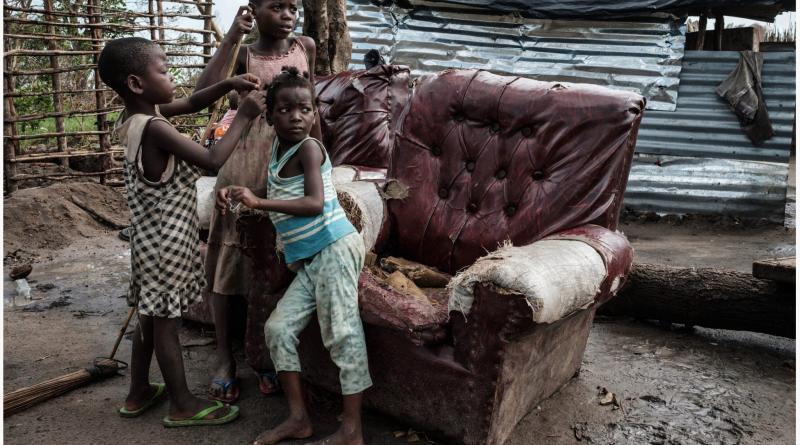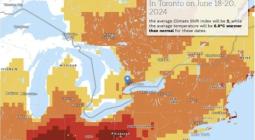Kids Are Particularly Vulnerable to Extreme Weather. What Are We Doing About It?

It’s not unusual for pediatricians to prescribe a healthy dose of sunshine and outdoor time to their growing patients. A wide body of research extolls the benefits of getting outside for kids—from improving motor skills to lowering obesity risk.
However, as climate change accelerates, this recommendation comes with a growing number of caveats.
Worsening hurricanes, heat waves, wildfires and droughts around the world pose particularly high risks for children, whose bodies and minds are still developing. A recent report showed that many countries are not taking heed of children’s health risks in their climate adaptation plans, even as research about these threats keeps mounting.
Climate Illness: Nearly every child around the world now faces at least one climate shock—whether wildfires, cyclones or storms—each year, according to a UNICEF report. These extreme weather events can be debilitating for young people, who often rely entirely on their caregivers to protect them and can struggle to understand the destruction unfolding around them.
And that’s just during the disaster. In the aftermath, it’s common for children to experience a broad array of psychological issues, including depression and mood swings, research shows. Children in low-income communities bear the brunt of these impacts, with fewer resources to recover after severe weather. After Hurricane Maria tore through Puerto Rico in 2017, a survey revealed that nearly 84 percent of young people saw their houses damaged and 7 percent reported symptoms of post-traumatic stress disorder.
In Florida, the nonprofit Project:Camp organized a trauma-informed camp in March for child survivors of Hurricane Ian in 2022. Kids could share their experience during and after the storm.
“Our backyard got flooded. And like a ten-foot tall tree fell on a RV. But it didn’t hurt anybody. Thank goodness,” Zamyrah Cruz, who was in fifth grade when she attended the camp, told Central Florida Public Media.
Each climate-fueled disaster can pose different pediatric health risks. Research shows that smoke from wildfires can increase asthma attacks and affect brain development, while droughts can cause water shortages and drive malnutrition. Climate threats can span the entirety of a child’s life—including while they are in the womb.
Inside Scoop: Perhaps the most pressing climate risk for kids this summer is heat. Since May, sizzling temperatures have challenged many regions around the world, including much of the U.S., Southeast Asia, India and Saudi Arabia. My colleague Victoria St. Martin, who covers the links between climate change and health, recently wrote about the extreme risks of heat for young people, who cannot regulate their body temperatures in the same way as adults. I asked her to tell me more about this.
As a mom of a preschooler, I am constantly thinking about how to keep my daughter hydrated while playing in the heat. I have read research about how extreme heat exposure in childhood can have lasting effects on learning and sleep quality, and how heat is linked to an increase in mood and anxiety disorders in children.
For the story, I spoke with Mattie Wolf, a neonatologist at Emory University’s School of Medicine and Children’s Healthcare of Atlanta, who said that everything about the way a child’s body works is different than in adults. Children’s bodies are smaller and heat up more quickly and they have less of a capacity to sweat, or in the case of infants, they don’t sweat at all.
In addition to being a physician, Wolf is a mother of two children. She said keeping her little ones safe in the heat is something that is on her mind as well.
“We certainly recognize the benefits of outdoor play to children. And so as long as heat is not excessive, it is important that children do get time outdoors and time to play, for both their physical and mental and emotional development,” Wolf said. “But in severe heat waves, we need to be making sure that our children are safe and so limiting time outdoors, making sure that they’re not out in the hottest parts of the day, which tend to be from 10 or 11 in the morning until 2 or 3 in the afternoon.”
She added that parents and caregivers also need to make sure that children “have access to shade as much as possible. Putting them in hats, long-sleeved but loose-fitting clothing to protect their skin from the sun and then making sure that they’re wearing sunscreen anytime they’re outside. … And then, again, the importance of hydration, so frequently offering them access to water.”
The Adaptation Gap: As research piles up on the health impacts of climate change on kids, pediatricians are increasingly integrating climate considerations into their practices.
However, the same can’t be said for many countries and policymakers, Anya Kamenetz reports for Grist. Recently, researchers analyzed the official national climate adaptation plans of 160 countries, finding that few substantially considered kids’ health needs—and nearly a third of the plans did not mention children at all. Countries such as Brazil, Chad and Sudan included a high level of child-specific adaptation themes in their plans. Many others—including the U.S. and China—fell short, according to the researchers, who published their findings in The Lancet.
“No country comprehensively addressed child health needs,” the study’s lead author, pediatrician Kathrin Zangerl, told Grist. “A few countries were better than others, but they weren’t really good.”
The most common children’s health climate measures included strengthening public health infrastructure, disaster preparedness and environmental pollution control. However, none of the plans mentioned children’s mental health, the study found. My colleague Jenaye Johnson recently wrote about the many ways that heat affects kids’ mental health, if you want to read more.
In February, the American Academy of Physicians put out a call to policymakers and doctors to increase climate awareness in clinical practices and public health plans. Kids themselves are also pushing back, calling on governments to protect their health and futures by slashing carbon emissions.
On Thursday, the government of Hawaii settled a lawsuit with a group of young climate activists, who had sued the state’s Department of Transportation for its climate-warming emissions. The plaintiffs claimed that the state violated their right to “live healthful lives in Hawaii now and into the future.”
Under the settlement—which legal experts are calling “historic”—the state government says it will release a roadmap to fully decarbonize Hawaii’s transportation infrastructure by no later than 2045, the Guardian reports. The case is similar to a landmark ruling in Montana last year, in which a judge decided that “Montana’s emissions and climate change have been proven to be a substantial factor in causing climate impacts to Montana’s environment and harm and injury” to a group of young plaintiffs.
However, experts say that climate health impacts are still outpacing policies across the world—and that parents must be aware of the risk their children face in heat, rain and other extreme conditions.






